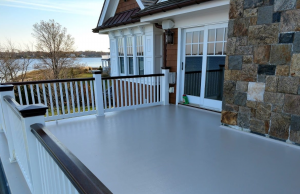In today’s global market, it’s hard to believe how much stuff is moved every day. A simple but very important creation called the pallet is one of the hidden stars that keeps this circle of production, consumption, and delivery going. Pallet shipping is an important part of modern transportation that is often ignored. It makes moving things easier and changes how businesses work.
Adding pallets or boxes to transportation systems has many benefits, such as making it easier to keep track of goods and making workers safer. Pallets, which can be made of wood, plastic, or metal, are used to stack smaller things on top of each other so that they take up less room when they’re shipped and require less work to move. Standardization speeds up the working process, lowers the cost of labor, and greatly reduces the damage to products.
We are going to talk more about pallet shipping and show you strong reasons why this way of transporting things should be promoted. From being good for the environment to working well with automatic systems, boards show how useful and flexible they are in every way. Want to know more about this interesting part of transportation and how it can help your business? Keep reading for a great trove of tips, trends, and best practices that will make you love box shipping even more. Get ready to be amazed!
Types of Pallets You Should Know About
Logistics is at the heart of international trade, and boxes are a key part of making shipping go smoothly. Different places have different rules about package sizes and materials, which affects how well and how much money supply chains make generally. It’s important to know the small differences between wood and plastic pallets as well as the basic sizes of pallets so that you can pick the best option for your needs.
How Wooden Pallets Can Be Used in Many Ways
The most common type of board is still wood, which is known for being flexible, cheap, and easy to fix. The best things about wood boards are that they can be used over and over, they’re cheap to make, and they’re easy to change. Also, wood boards allow a lot of air to flow through them, which effectively spreads the heat from stored things and cushions minor bumps. Unfortunately, termites, mold, mildew, and germs like to live on wood boards. This can make it harder to keep things clean and shorten the shelf life of goods in places that need to be very careful.
The Next Option is Plastic Pallets
Clean, strong, and light, plastic pallets are made from chemicals found in oil. Germs and bugs can’t grow and take over because plastic boxes don’t have holes like biological boxes do. Plastic boxes also don’t break down or get damaged easily, even when they’re exposed to very high temperatures.
This is different from recyclable wood, though, because these things are made with fossil fuels, which create warming gases. Plastic boxes are also more expensive to buy at first, which makes it hard for them to be widely used in large-scale shipping activities.
Sizes of Standard Pallets
Standardization has become an important part of growing global trade, requiring that all pallets have the same measurements. The International Organization for Standardization (ISO) is in charge of managing container sizes. The following six measurements are some of the most important ones.
| ISO Pallet Sizes (mm × mm) | ISO Pallet Sizes (inch × inch) | Wasted Floor Space (%) | Region(s) Most Used |
| 1016 × 1219
|
40 × 48
|
3.7
|
North America |
| 1000 × 1200 | 39.37 × 47.24 | 6.7 | Europe, Asia |
| 1165 × 1165 | 45.9 × 45.9 | 8.1 | Australia |
| 1067 × 1067 | 42.00 × 42.00 | 11.5 | North America, Europe, Asia |
| 1100 × 1100 | 43.30 × 43.30 | 14 | Asia |
The Grocery Manufacturers Association suggested a common pallet size, which led to the creation of a useful 48″ by 40″ pallet shape. After this idea was put forward, these pallets became very famous and were named GMA pallets. GMA boxes made delivery processes much easier and are now mostly used in North America but are also being used in other places.
These ISO-approved dimensions permit organizations to forecast storage requirements, estimate transportation capacities, and circumvent unforeseen expenditure stemming from pallet modifications.
Which Pallet Type Will Rule Your Domain?
Whether you choose wood or plastic boxes depends on your business, how often you ship, and how clean you like things to be. Plastic pallets are better for medicines, food, and electronics, while wood boards work best in traditional storage sites. No matter what road you choose, accept the beauty of standards and take advantage of global connections and supply lines that work together.
Tips for Preparing Pallet Shipments
Tip #1: Positioning an item strategically
Make sure that the heavier items are at the bottom and that the lighter ones are slowly added on top of them. Sort the boxes in a way that makes the weight spread out fairly. This will help you avoid leaning towers or stacks that aren’t level.
Tip #2: Keep your things safely locked up.
Put enough stress on each layer of stretch film to hug the things together and make a tight seal. To join the layers vertically, run horizontal bands around the edges of the box and press the contents down. Fill in the empty spaces with cardboard, air pillows, or foam blocks to stop movement and make the layout denser.
Tip #3: You need to protect the edges.
Protect the sides of the crate with corner board guards, angle boards, or edge rails to stop boxes from getting crushed and to cushion possible knocks.
Tip #4: How to Make a Band
To get the best hold, put the bands down both horizontally and diagonally. Stretch at least two bands around the outside of the box so that they are all the same length. Both ends of the terminating loops must clamp down on the same side to keep the tension steady.
#5: Learn how to shrink wrap like a pro
Cover the box and all of its contents by about half of each piece of wrap. Press down on each loop as you go from the bottom to the top to get rid of any air that is stuck. Stop every so often and pull the wrap tighter by pulling it to the side. You can protect yourself from bad weather by attaching a top sheet and pulling it tight around the edges.
Tip #6: Use smart ways to load
Place boxes on lift trucks or dollies so that they are level and the length is in the middle of the cargo’s center of mass. Make sure the ground is level under the wheels to keep the unit stable and stop it from tipping or tilting. The fork tines must be raised slowly and carefully so that they can be inserted under the box while still hanging just above the ground. Lift the load slowly while keeping an eye on its balance, and then start moving it to the marked area.
Tip #7: Unloading with care
Tell the workers to carefully lower the boxes while moving the forks vertically until they rest flat against the deck. Slowly lower the load, stopping every so often to make sure it stays balanced and in the right place. When the box hits the floor, tell the workers to stop and remove the layer below it before starting the release process.
Choosing the Right Pallet Shipping Service
It is crucial to choose a suitable pallet shipping service in order to ensure a seamless and trouble-free transportation experience. Consider the following contrasts and critical factors when selecting the ideal pallet delivery service for novices:
- Assessing Company Image: Analyze the reputation of the transportation company in light of customer ratings and opinions. Choose an experienced and reliable companion.
- Compare Shipping Alternatives: Consider In evaluating shipping alternatives, it is crucial to distinguish between full truckload (FTL) and less than truckload (LTL) services. Assess their advantages and disadvantages in order to accommodate your cargo requirements.
- Add Up Overall Costs: Compile a comprehensive tally of the overall shipping expenditures, incorporating petroleum charges, handling charges, and base charges. Determine which company offers the ideal blend of cost-efficiency and superior service.
- Ensure Service Availability: The Availability of Services Confirm whether the shipping company operates within the specified geographical area and serves clients on a regional, national, or global level.
- Question Insurance Details: Request Information Regarding Insurance Specifics: Inquire about the integrated insurance scheme, the claim registration procedures, and the utmost amount that can be claimed to protect your cargo during transit.
- Sync Software Systems: Ensure software system compatibility between the two entities, namely the shipping company and yourself, to promote efficient data exchange, streamlined communication, and real-time tracking.
- Rate Customer Support: Conduct an evaluation of customer support by assessing the organization’s proficiency, response time, and accessibility. Organizations that prioritize conflict resolution and customer relations.
LTL Vs FTL Shipping
It is mostly possible to move things using two main types of logistics: Less than Truckload (LTL) and Full Truckload (FTL). Here’s an easy way to explain the difference.
To begin, LTL shipping is great for sending small items that won’t fill up the whole truck. As an alternative, several LTL shipments from different senders may be combined onto one truck. This approach has the potential to significantly reduce transportation costs for consumers and small businesses.
The other side is that FTL shipping is the best way to handle bigger packages that need a whole truck. Using FTL grants you exclusive use of the vehicle. Because the driver doesn’t have to stop as often to gather or convey different kinds of freight, delivery times are improved. Therefore, if you need to send a lot of products quickly or have a lot of items, FTL can be the best option.
A lot of the time, choosing between LTL and FTL depends on your specific needs. Before making a decision, think about things like the size and weight of your package, the speed at which you want it delivered, and your budget. By carefully considering these factors, you’ll be able to figure out which shipping method is best for your business.
Calculating Pallet Shipping Costs
When figuring out how much it costs to ship a box, you have to look at more than just the basic freight charge. When you’re figuring out how much your overall pallet shipping bill will be, here are some of the main costs you should think about:
- Freight Charges: These are the base prices for moving your boxes from one place to another, plus or minus the weight and type of shipping (less than truckload, LTL, or full truckload, FTL).
- Surcharges: Surcharges are extra fees that are added to the freight charge because of certain conditions or services that are asked for.
- Additional Fees: Extra fees for things like home pickup or delivery, liftgate service, or pickup or delivery inside.
- Dimensional weight: Dimensional weight is used when the real size of the package is bigger than a certain cubic size, even if it weighs less.
- Fuel Surcharge: A fee that is based on the price of fuel at the time it is used.
- Duty and Taxes: When you import or export boxes, you may have to pay customs duties, taxes, and trading fees, depending on the rules of international trade.
- Packaging and Handling: This is the cost of getting your boxes ready to ship, like shrink wrapping, applying stretch film, or making special crates.
To help you understand how to do the math, let’s look at an example of LTL shipping within the United States:
Say you need to move three normal pallets, each measures 48″ x 40″ x 48″, that are full of goods that weigh about 3,500 lbs. Where the shipping starts for you is Chicago, IL, and where it ends up is Los Angeles, CA. You ask for pick-up and delivery inside, as well as lift gate service.
Cost of Freight: The carrier charges $7,500 for the package based on the details given.
Extra fees:
- Residential Pickup/Delivery: add $300 per spot, for a total of $600.
- Pickup and delivery inside: extra $150 per spot, for a total of $300
- Liftgate Service: Add $100 for each pickup and delivery, for a total of $400.
Surcharges in total: $1,300
Costs Not Included:
- Custom Boxes: $500
- For a total of $9,800, insurance costs $500.
You can make a full quote for your pallet shipping job by taking into account all the important cost factors. Here are some more tips to help you lower your general shipping costs:
- Optimize your packaging: putting your goods properly on boxes lowers the chance that they will get damaged, which could save you money on repair or replacement costs.
- Group packages together: Handling and shipping costs can be cut by combining several smaller orders into a few bigger ones.
- Talk about rates: Discounted prices can come from building strong ties with companies by doing a lot of business with them or sending a lot of goods.
- Pick out the best way to ship: Think about things like volume, weight, and arrival time to decide whether LTL or FTL is better for your case.
- Use technological solutions: Tools like Transportation Management Systems (TMS) and Freight Audit & Payment systems can make things easier, cut down on mistakes, and make sure that bills are correct.
Pallet Shipping Best Practices
Learning the best ways to move pallets will make the process go more smoothly for everyone. To keep your things safe, start by focusing on the right way to handle them. Levelly stack boxes and keep them in place with braces, straps, or wraps to keep them stable during transport. Using pallet jacks and tools that are made to be easy on the body also makes moving things easier and less likely to cause accidents.
If you care about the environment, reused crates are the best choice. Using them not only lowers the prices of making things and getting rid of waste, but it also makes the supply line healthier. If you want to use this method in your business, look for reputable companies that rent or buy boxes.
Also, work with companies who care about the environment and want to lower their carbon footprints. Their dedication to green projects and tools that use less energy can help your company’s efforts to be more environmentally friendly.
Optimization is a very important part of moving pallets successfully. Filling cars to their highest capacity efficiently cuts down on the number of trips that need to be made, which saves money and resources. Strategically placing your loads based on how heavy they are and how big they are lets you make the best use of the room you have. Don’t forget that every little thing helps make a business smaller, healthier, and cheaper.
Tracking and Monitoring Shipments
Seeing your shipment in real time isn’t just nice to have; it’s necessary. You have more control over your business when you use tracking technology.
Along the way, GPS devices, RFID tags, and barcode scanners will be very helpful to you. With GPS, you can find out exactly where your freight is, and with RFID, it can be automatically identified and its state can be updated in real time. Barcode reading makes sure that records are kept correctly and that important data is easy to get to.
Pay close attention to where your packages are at all times. Using these strong tools gives you the power to quickly adapt to changing situations, see problems coming, and go above and beyond what customers expect.
Dealing with Common Pallet Shipping Issues
Put on your detective cap and get ready for the odd problems that may come up when transporting pallets. Here are two common problems and how to solve them. straight on.
Number 1. Damage and Claims: You need to move right away when dealing with losses or making a claim. You should keep an eye on your things both before they leave and after they get to their destination. What problems are you having with your insurance? Be clear with them, and be ready to show proof to back up your claim. A strong bond built on open and honest conversation goes a long way toward finding peaceful ways to solve issues.
Number 2. Stops and delays: Things can go wrong even if everything is worked out perfectly. You should think about what could go wrong with your shipping so that you can be ready for anything. Make sure you have backup shipping choices, send the most important packages first, and talk to your service and watch your packages in real time to find out about any possible delays. Things that go wrong out of the blue can be turned into chances to get better.
Future Trends in Pallet Shipping
Those who are unfamiliar with shipping a pallet should be excited about the upcoming great changes! Innovative pallet designs and robotic help are the two key areas that are pushing the envelope.
- Fancy New Pallets: Soon, pallets will be tailor-made for specific jobs, featuring neat perks like foldable sides, snap-together pieces, and extra toughness. These enhancements result in better care for delicate products, neater storage spaces, and fewer expenses.
- Magical Machines Taking Charge: Imagine robots driving trucks and drones carrying pallets instead of people! They make the workflow smoother and quicker. Plus, adding special gadgets like sensor chips, brainy computer programs, and secure digital records helps collect vital information instantly, guess what might happen next? Yes, we’ll enjoy hassle-free logistics and super-easy transportation!
Most Common Questions People Also Ask (PAA)
How much does it cost to ship a pallet?
Prices vary depending on factors like weight, distance, and shipping method; LTL (Less Than Truckload) or FTL (Full Truck Load). Request quotes from multiple brokers to compare prices.
What is the best way to package items on a pallet?
Use sturdy boxes, securely strap items down, and apply protective wrapping or padding to prevent damage. Ensure even distribution of weight across the pallet.
How do I track a pallet shipment?
Most reputable carriers like Uship offer online portals or apps for real-time updates. Alternatively, ask your broker for regular status reports.
What is the difference between LTL and FTL pallet shipping?
LTL means sharing space with other consignments, whereas FTL refers to exclusive use of a truck. Choose based on volume, budget, and desired transit time
Can I ship internationally using pallets?
Yes, pallets can travel overseas using ocean or air freight services. Consult experienced international shipping providers for guidance.
How do I file a claim for damaged pallet shipments?
If your pallet arrives damaged, report it within specified timeframes. Provide detailed descriptions, photos, and proof of receipt. Cooperate closely with your carrier to reach a fair resolution.
Are there eco-friendly pallet shipping options available?
Look for recycled, reusable, or biodegradable pallets. Many companies also invest in carbon offset initiatives.
What are the advantages of using plastic pallets for shipping?
Benefits include lighter weight, improved hygiene, and longer lifespans compared to wooden alternatives.
How can I find reliable pallet shipping companies near me?
Research reviews, certifications, and industry expertise. Utilize rating platforms and referrals to identify trustworthy partners.
What technologies are used to monitor pallet shipments in real-time?
Real-time tracking relies on GPS, RFID, and barcode scanning. Carrier websites and mobile apps allow users to monitor shipments throughout the journey.







